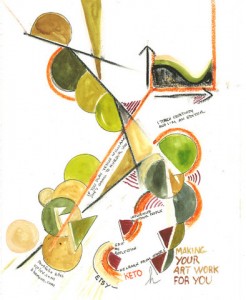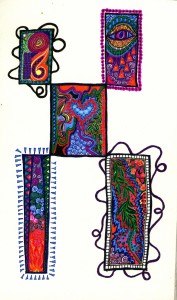
The title of the article, Talent Isn’t Fixed and Other Mindsets That Lead to Greatness, drew me in. Here is the opening paragraph.
According to Stanford University’s Carol Dweck, the psychologist behind the much-praised book Mindset: The New Psychology for Success, the attitude that we bring to our creative work—and to mentoring our juniors—can play a huge role in shaping just how much of our inborn talents we realize.
One of the most important things that I think I offer the individuals and groups I work with is to notice their contribution, their creativity, passion, persistence –> whatever the quality. The article calls this people’s “inborn talents.” I think it is more than inborn, but I won’t quibble…
I call my role or function “holding up a mirror.” Helping people see for themselves their power and agency. But that is an oversimplification. So it seems useful to consider how we give feedback — it matters. Take a look at some wise words from Stanford University’s Carol Dweck.
Could you give me an example of how that language would actually play out if I were giving someone feedback?
A fixed mindset approach would be saying something like: “This project turned out amazing. You’re a genius. I knew you had the talent. This is proof of it.” As opposed to a growth mindset approach of, “Wow, this project turned out fantastically well. I loved the way you mobilized the team, the way you kept everyone focused, the way you brought it to fruition, the way you made everybody feel the ownership.” These are things you can replicate and that you should replicate the next time. Whereas, when I say, “You’re a genius!”…how do you reproduce that over and over?
And what about when you need to give someone criticism? Or point out an area that needs work?
As I mentioned, when you are giving criticism, you need to carefully critique the process someone engaged in and discuss what skills they need to learn and improve.
But I’ve also fallen in love with a new word—“yet.” You can say to someone who fell short: “You don’t seem to have this,” but then add the word “yet.” As in, “You don’t seem to have these skills…yet.” By doing that, we give people a time perspective. It creates the idea of learning over time. It puts the other person on that learning curve and says, “Well, maybe you’re not at the finish line but you’re on that learning curve and let’s go further.” It’s such a growth mindset word.
The “yet” thing is interesting and it reminds me of the power of “Yes, And,” from improv. Interesting that searching for a link took me back to the 99U site! Look at this. It both cases, I don’t think the feedback is limited ONLY to specific feedback — I really liked what Dweck said in response to the first question. But also having some lack of clarity also leads to possibility. Thus Roland’s fuzzy mirror photo inspired my thinking a bit more. Clarity on feedback, and possibility going forward. How’s that? How do you give feedback?
Photo from my friend Roland Tanglao.


